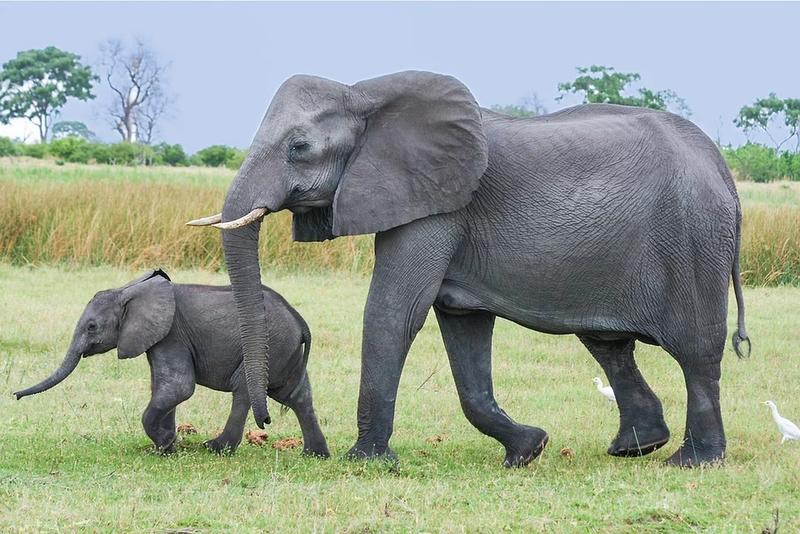Can a Mother Put a Baby Up for Adoption Without the Father

A baby elephant is called a calf. The male is called a bull, and the female is called a cow. A group of elephants is usually called a herd. Elephants have one of the most intricate social structures of any species on Earth.
Female elephants don't usually give birth until they are about 15 years old. Meanwhile, males aren't ready to reproduce until they reach the age of about 30. Once females mature and become mothers, they may have up to 12 calves in their lifetimes, usually waiting a year after birth to become pregnant again. The gestation period for an elephant is 22 months.
Elephant Reproduction
When the female cow is ready to give birth, she'll stay close to other trusted females in her herd to receive protection when she does finally go into labor. Birth is quick, and elephants almost always have just one baby. The average calf is about 3 feet tall and weighs around 120 pounds. The calf's mother and other elephants in the herd help it to its feet, and it's able to stand on its own within 2 hours of birth. At birth, the calf is hairy with a long tail and short trunk.
Baby Elephant's First 2 Years
Elephants don't mature as quickly as many other animals do, and they typically don't wean themselves from their mother's milk until they are about two years old. A few days after birth, the calf is strong enough to walk and keep up its herd, although the females in the herd may slow their pace to help any new babies keep up with them. During those early months, the calf's mother and the other females in the herd guide it, teaching it which plants are OK to eat and how to stay safe from predators. After six months, the calf begins eating vegetation in addition to its mother's milk.
Adult Elephants
Adult elephants are the largest land mammal on Earth. They can grow to be up to 13 feet at the shoulders and more than 14,000 pounds. They can live up to 70 years.
Female-dominated Herds and an Elephant's Social Life
Having family and friends around as part of the herd is important to the elephant's life. They live in female-dominant herds, often casting out males who go off to live alone or in smaller groups. The herd's oldest female is usually its leader. Her job is to help with socialization, survival, and finding food and water. Herds typically consist of up to 20 elephants.
Elephants are said to be kind and intelligent, and they greet each other with their trunks. They can identify a friendly elephant up to 2 miles away through low sounds and rumbles. Other traits elephants show that aren't always common in the animal kingdom are problem-solving, mourning, and empathy.
Types of Elephants
While there are several subspecies of elephants, there are only two species. African elephants tend to be larger and live longer. As the name suggests, they live primarily in about 37 African countries. Asian elephants are smaller and have a slightly shorter lifespan. They live in at least 13 Asian countries.
Elephants' Habitats
Asian elephants typically live in the continent's forests and rainforests. African elephants live throughout sub-Saharan Africa. They thrive in hot conditions where they have access to plenty of vegetation. When water is sparse, elephants can stomp the ground to find underground streams.
MORE FROM REFERENCE.COM
Can a Mother Put a Baby Up for Adoption Without the Father
Source: https://www.reference.com/pets-animals/baby-elephant-called-a3893188e0a63095?utm_content=params%3Ao%3D740005%26ad%3DdirN%26qo%3DserpIndex